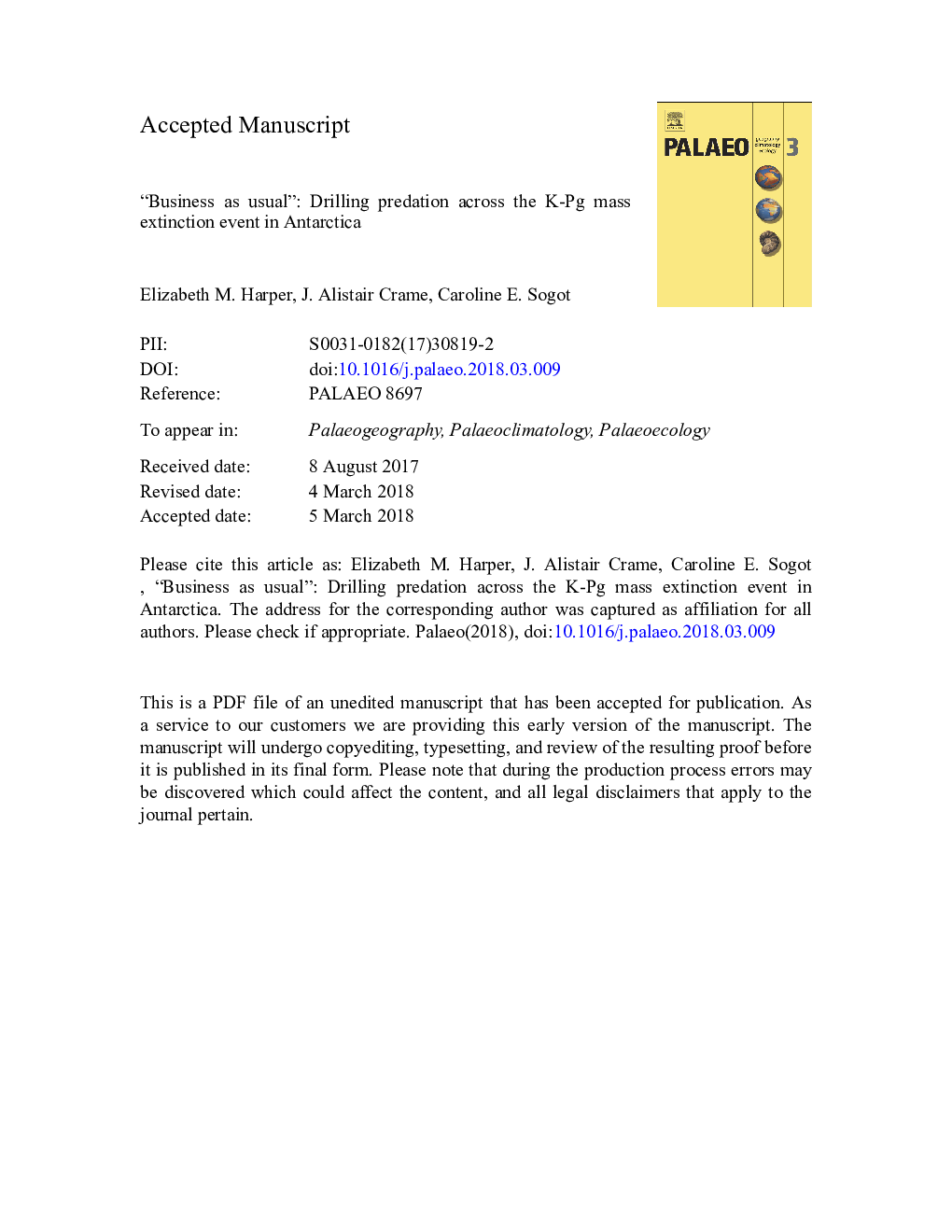| Article ID | Journal | Published Year | Pages | File Type |
|---|---|---|---|---|
| 8868245 | Palaeogeography, Palaeoclimatology, Palaeoecology | 2018 | 48 Pages |
Abstract
A survey of 759 predatory drill holes in Late Cretaceous and Paleogene molluscan and serpulid worm prey from Seymour Island (Antarctica) has allowed exploration of the effects of the K-Pg mass extinction on predator-prey dynamics at this high latitude site. Circular holes (0.62-6.41â¯mm in diameter), suggesting a large gastropod predator, most probably “Vanikoropsis” arktowskiana, occur throughout the study interval. Analysis suggests that the driller was a catholic predator capable of attacking a range of prey types, showing some degree of size and stereotypic handling behaviour. Although there were changes in prey choice across the extinction event, these reflect changes in available prey, and in particular limited options immediately post extinction. There were no significant changes in failure rate (Prey Effectiveness) over the mass extinction. Our findings suggest that at this site, for this particular predator, aside from menu choice, predation dynamics post-extinction was “business as usual”.
Related Topics
Physical Sciences and Engineering
Earth and Planetary Sciences
Earth-Surface Processes
Authors
Elizabeth M. Harper, J. Alistair Crame, Caroline E. Sogot,
